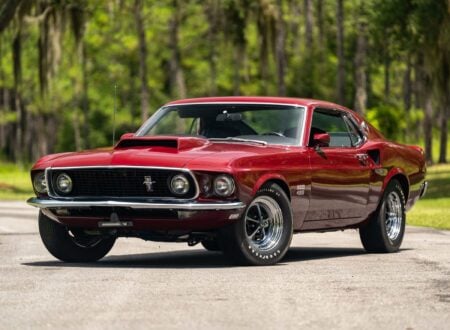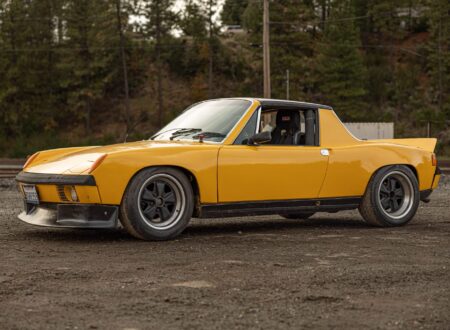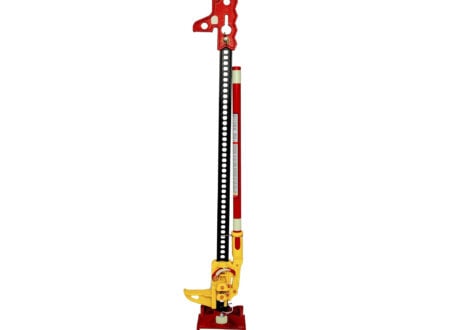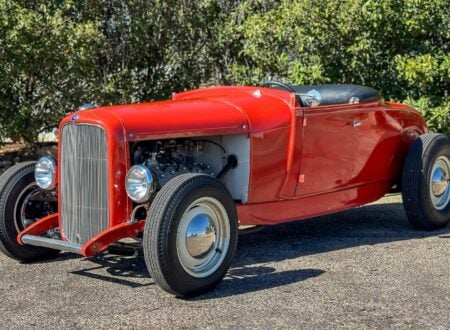This is 1963 AMC M422 Mighty Mite, it was developed as a lightweight military 4×4 that could be deployed by air –specifically by the Sikorsky H-19 Chickasaw and other US military helicopters of the time.
The Mighty Mite has been called the “Mini Jeep” and it’s not hard to see why, though it’s actually far more advanced than the Jeep ever was, with its independent front and rear suspension, lightweight aluminum body, front and rear limited-slip differentials, inboard brakes, and compact 1.8 liter aluminum V4 engine.
Fast Facts – The Mighty Mite
- Developed in the 1950s as a lightweight, air-deployable 4×4 military vehicle, the Mighty Mite featured advanced engineering including an independent suspension, aluminum body, and compact 1.8L V4 engine – making it a significant technological leap beyond the iconic Jeep design that inspired it.
- The Mighty Mite’s compact size allowed it to be transported by early military helicopters like the Sikorsky H-19, but this also limited its usefulness as larger and more capable transport helicopters like the Bell Huey entered service in the early 1960s, leading to relatively low overall production numbers.
- This 1963 AMC M422A1 model has undergone a refurbishment and still retains its original United States Marine Corps markings, powered by the 1.8L aluminum V4 engine paired with a 4-speed manual transmission and dual-range transfer case for optimal mobility in rugged terrain.
- Rarely seen today, this restored Mighty Mite now represents a unique opportunity for collectors and enthusiasts to buy a pioneering air-deployable military vehicle from the early Cold War era of the 1960s.
Developing An Air-Deployable Jeep
The plan to develop the Mighty Mite started back in 1946, just a year after the end of WWII. The self-taught engineer, pilot, and racing driver Ben F. Gregory from Missouri began designing a series of front-wheel drive compact cars. If anything he was decades ahead of his time, but the world wasn’t ready for it yet and as a result he couldn’t drum up any interest from major manufacturers.
Above Video: This is original archival footage of the Might Mite in testing, before it had been approved for production. It gives a good overview of just how capable it is off-road.
By The late 1940s, Gregory had modified his designs and come up with a compact four-wheel drive vehicle. It was an advanced design for the era, with four-wheel independent suspension and a low curb weight.
One of his investors arranged a demonstration of the prototype for the United States Marine Corps (USMC) Equipment Board in 1951 and it went so well that Gregory and his investors rapidly formed the Mid-America Research Corporation (MARCO) to develop the vehicle further, eyeing lucrative military contacts.
Over the next few years the project would progress swiftly, they hired Harold Crist who was formerly American Bantam’s chief engineer who had led development of the Bantam BRC, on which Willys MB or “Willys Jeep” had been based. Crist would soon bring on many former members of his American Bantam engineering team, including Chet Hempfling, Ralph Turner, and Frank McMillan.
As a result of all this, the final example of the Mighty Mite would have much of its development work done by the same people who had made the original Jeep a reality. Due to the compact nature of the prototype, named MM-100, it was decided to use the Porsche 356 S engine, an air-cooled flat-four.
This foreign engine would cause some issues however, as at this time WWII was very much recent history, and Porsche had been developing equipment for the German Armed Forces during the war. There were US regulations in place requiring American-built equipment in American military vehicles, and as a result of this there was a failed attempt to modify the US-made Lycoming O-145 aircraft engine for use in the MM-100.
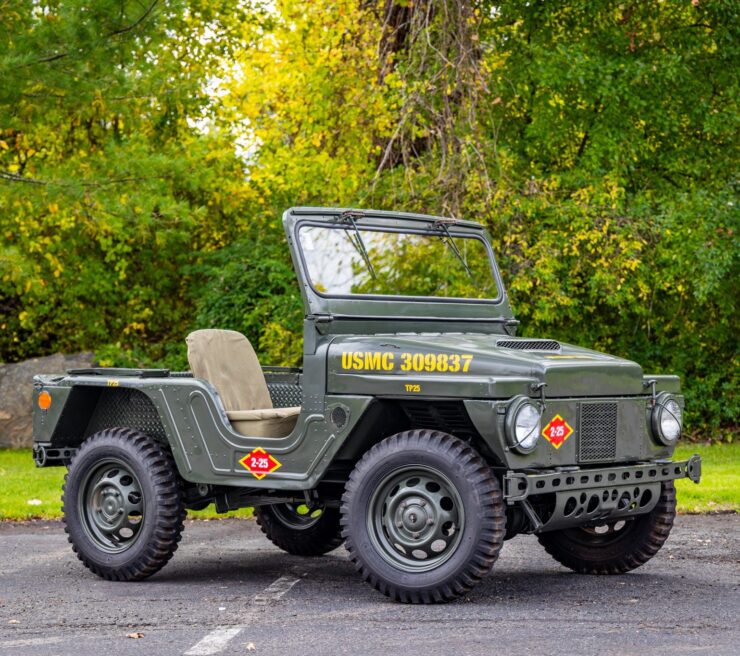

At some point it was discovered that American Motors Corporation (AMC) had a lightweight, aluminum V4 engine in development that had been intended for an affordable, compact car.
Once the MM-100 development team got talking to AMC executives about the project it didn’t take long for AMC to buy them out and take over the project – as a side benefit it would also help them keep a former Hudson commercial vehicle plant operating and save the jobs of its employees.
By this time, the mid-1950s, it became known that had a lightweight military 4×4 prototype in development called the Bobcat or “Aero Jeep.” It was also planned to use many standard Jeep (M38 and M38A1) parts to lower costs.
This was a serious blow to the MM-100 project, however thanks to their more advanced design the Willys Aero Jeep was rejected in favor of the MM-100, and in 1958 the first order for 250 vehicles was placed by the USMC.
The final production design of the MM-100 would be called the AMC M422 “Mighty Mite.” It had an aluminum body, independent front and rear suspension, inboard drum brakes front and back, limited-slip differentials front and rear, and an aluminum AMC 1.8 liter V4 engine capable of 52 bhp and 90 lb ft of torque. The vehicle had a curb weight of 1,700 lbs (771 kgs) and a top speed of 65 mph – a solid pace for a military vehicle at the time.
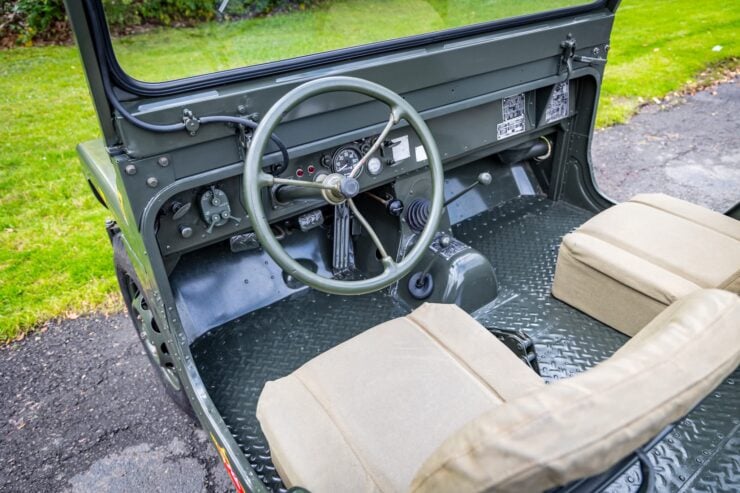

After the first 1,000 or so units had been produced the M422 version was replaced by the M422A1, this new version offered a number of updates including a 6 inch longer wheelbase and overall length. The Mighty Mite was capable of fording water up to 21 inches, or up to 60 inches with a special kit installed, and it could carry up to 850 lbs while still towing a 1,000 lbs trailer.
The AMC Mighty Mite would remain in production from 1959 to 1963 with just under 4,000 made in total.
The vehicle had been made small enough to be carried by the Sikorski H-19 helicopter, but by the early 1960s the military had other helicopters in service, including the Bell UH-1 “Huey” which had far more carrying capacity. This limited the need for the Might Mite, and thus production numbers remained relatively low.
The 1963 AMC M422A1 Mighty Mite Shown Here
The vehicle you see here is an original 1963 AMC Mighty Mite, it’s one of the later M422A1 variants offering a little more room thanks to the slightly longer wheelbase and body. This Might Mite is said to have been refurbished under previous ownership, then bought by the current owner (and now seller) in 2020.
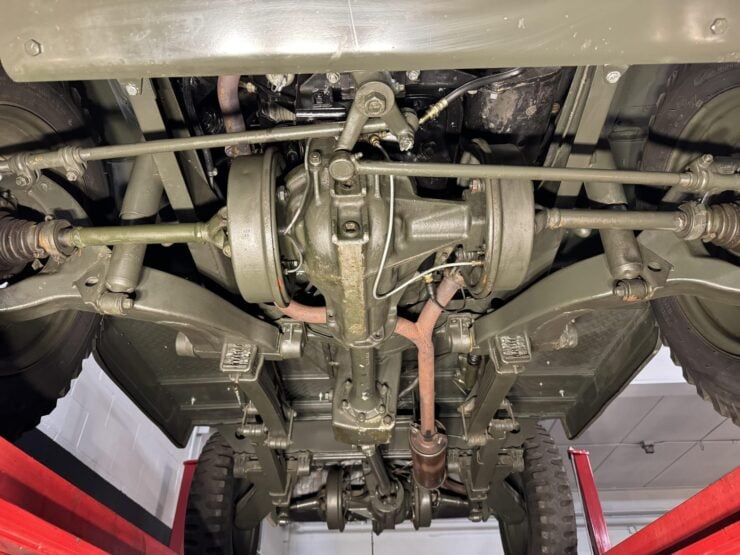

It’s finished in military green and still has its original 1.8 liter AMC V4 engine, sending power back through a 4-speed manual transmission and a dual-range transfer case. It retains its yellow United States Marine Corps lettering, and it is equipped with a louvered hood, a folding windshield, lifting rings, and a pintle hitch.
It’s now being offered for sale on Bring a Trailer out of Mount Kisco, New York on dealer consignment in New York with a bill of sale. If you’d like to read more about it or register to bid you can visit the listing here.

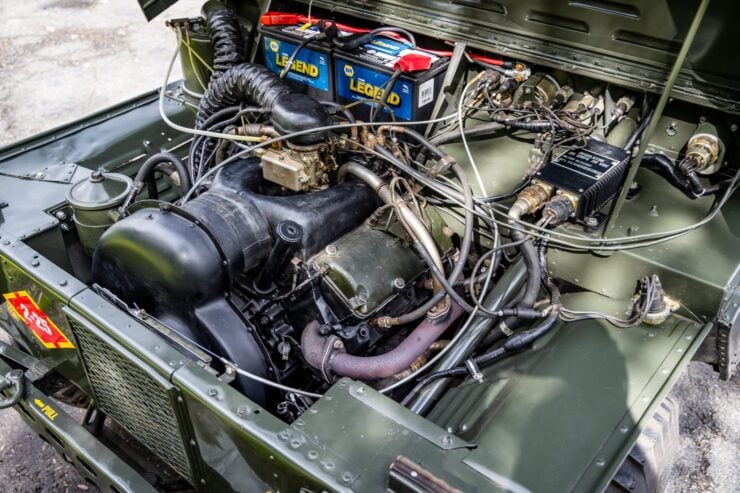
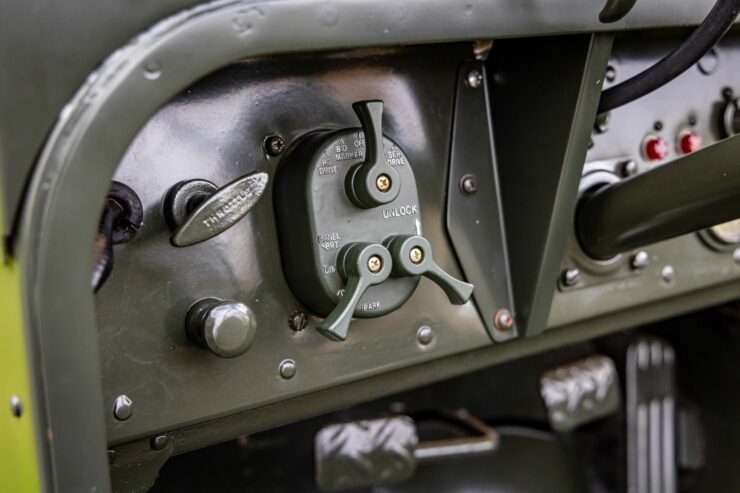
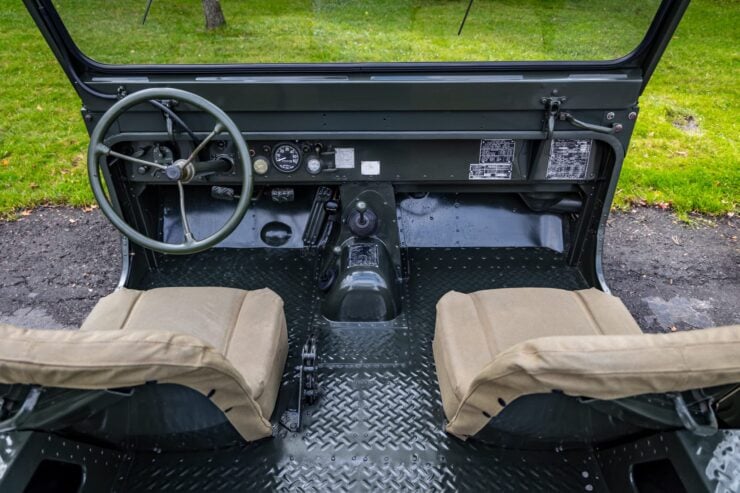
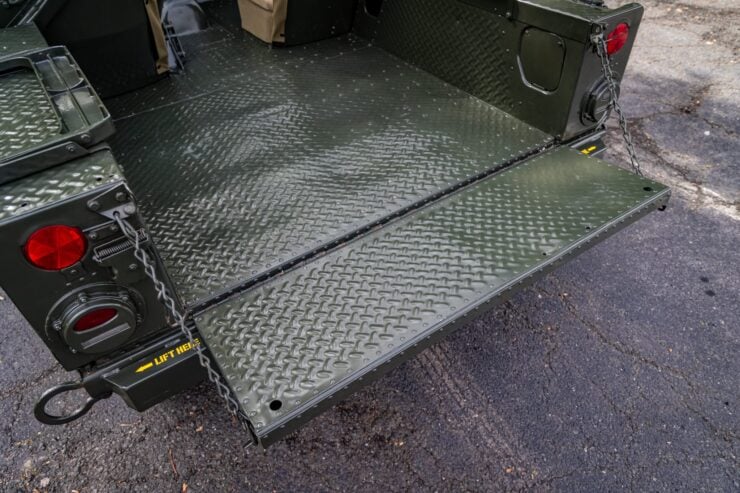
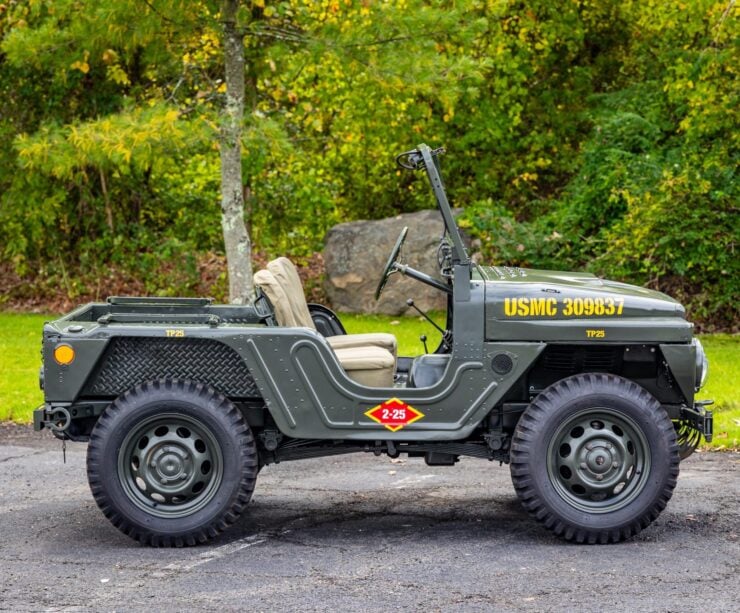
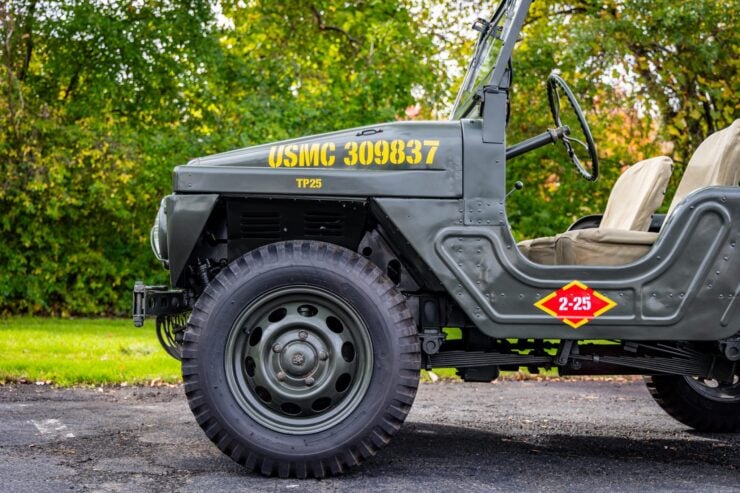
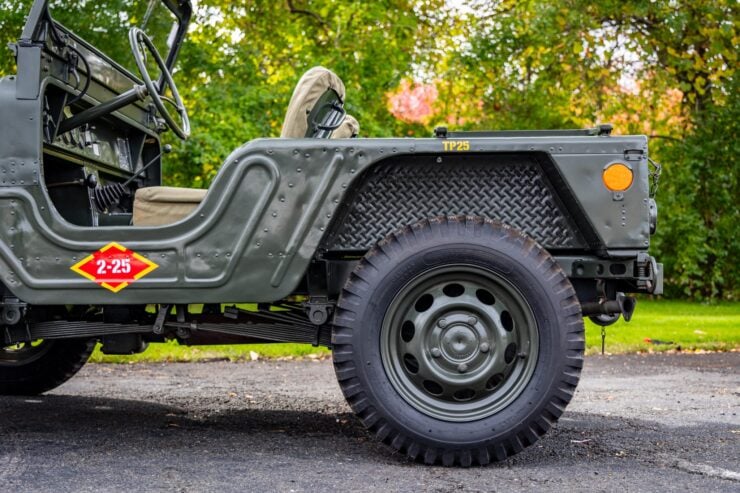
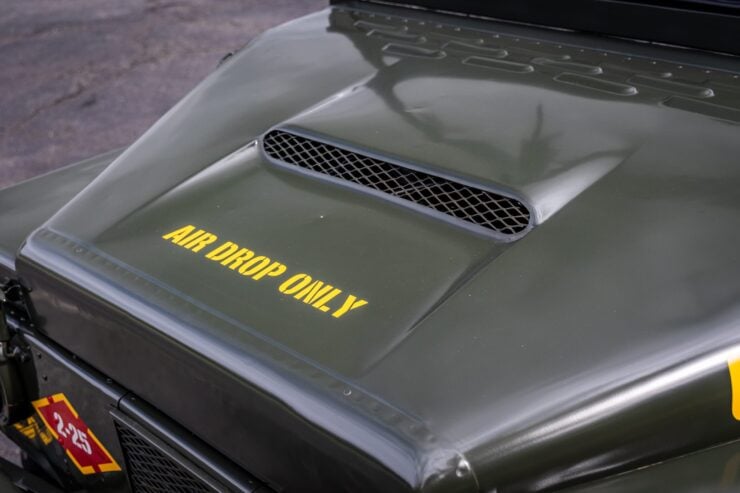

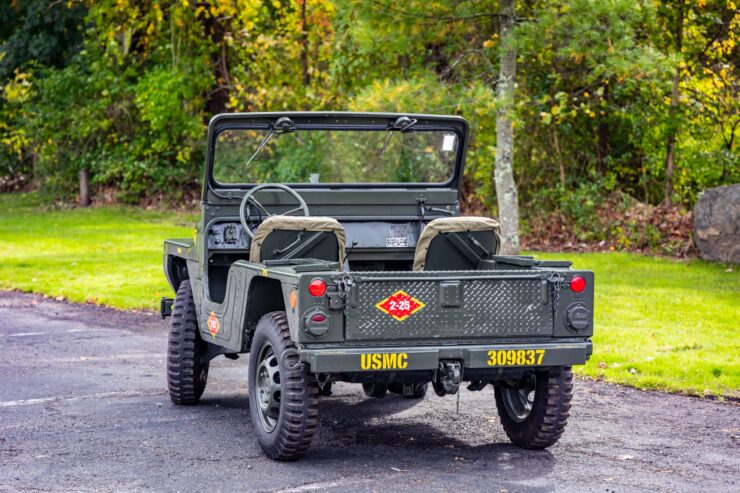

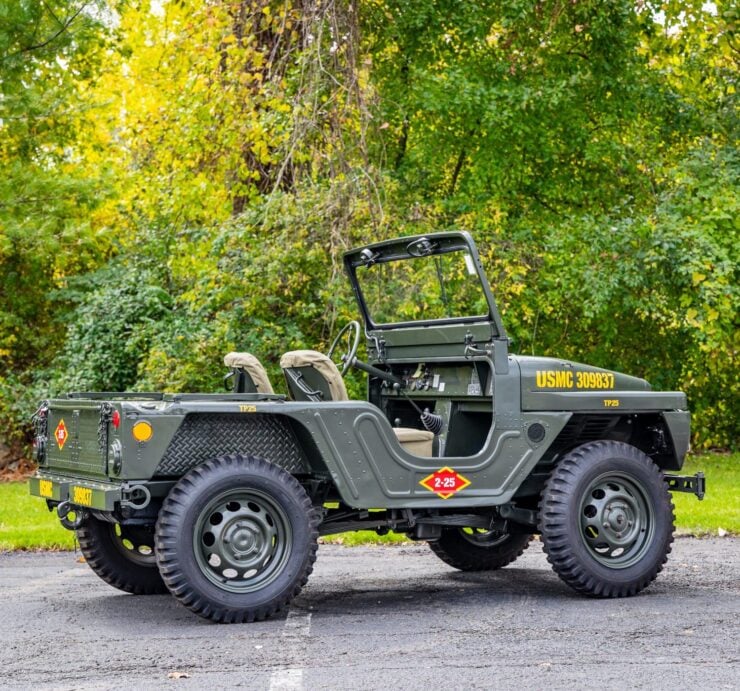
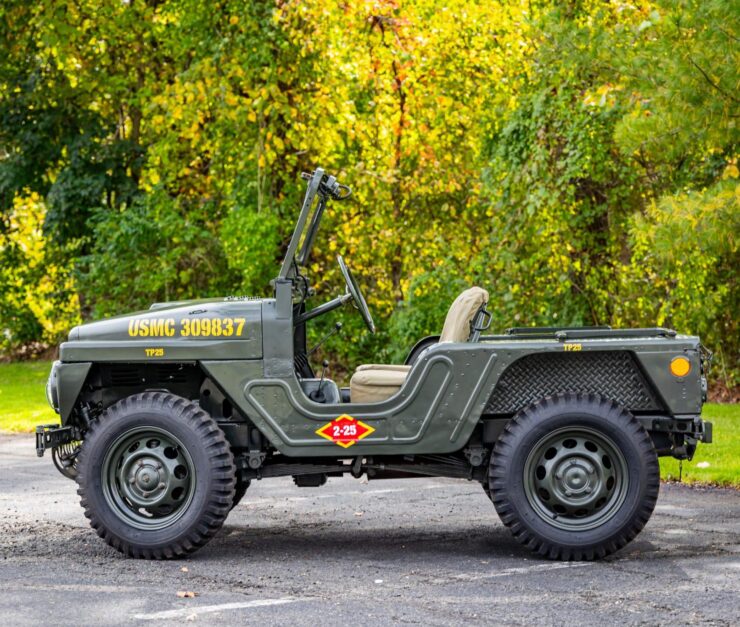
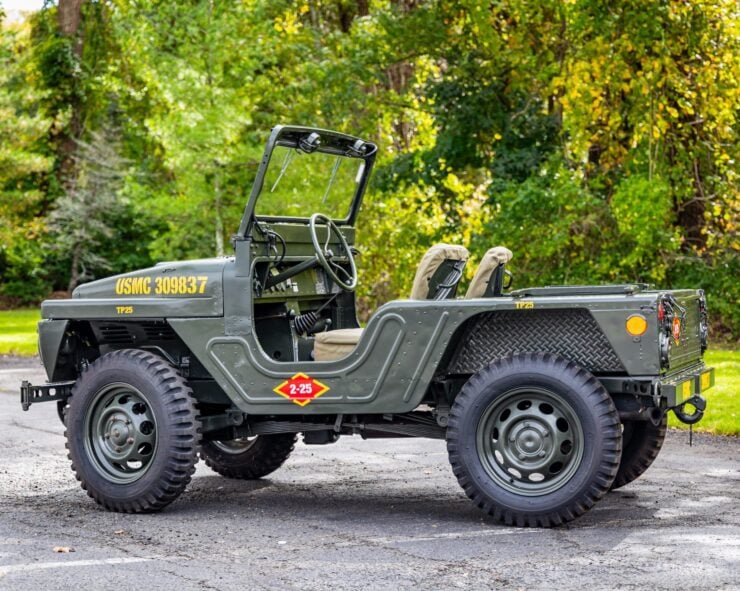
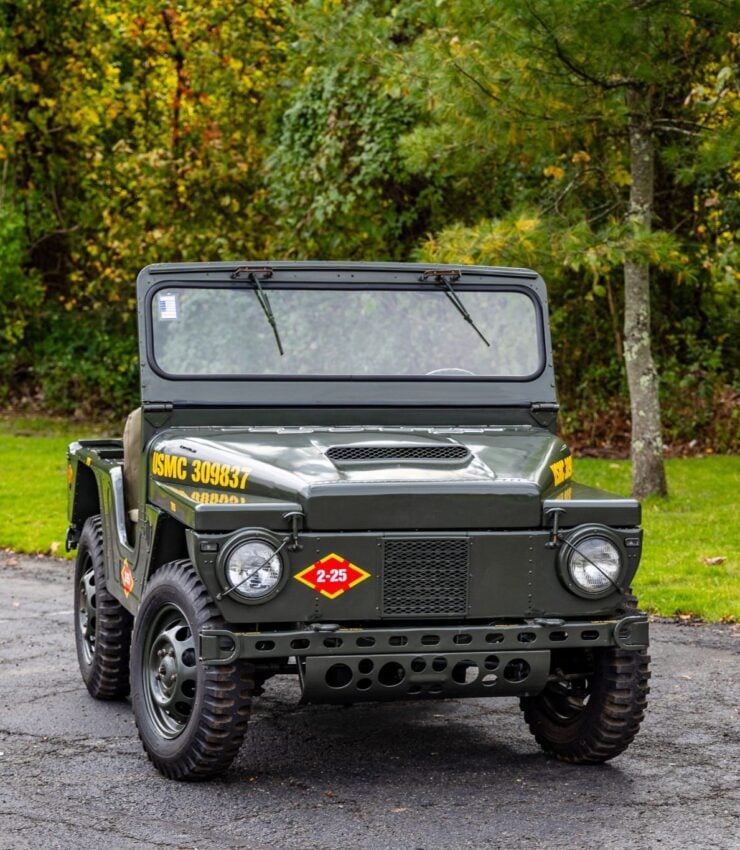
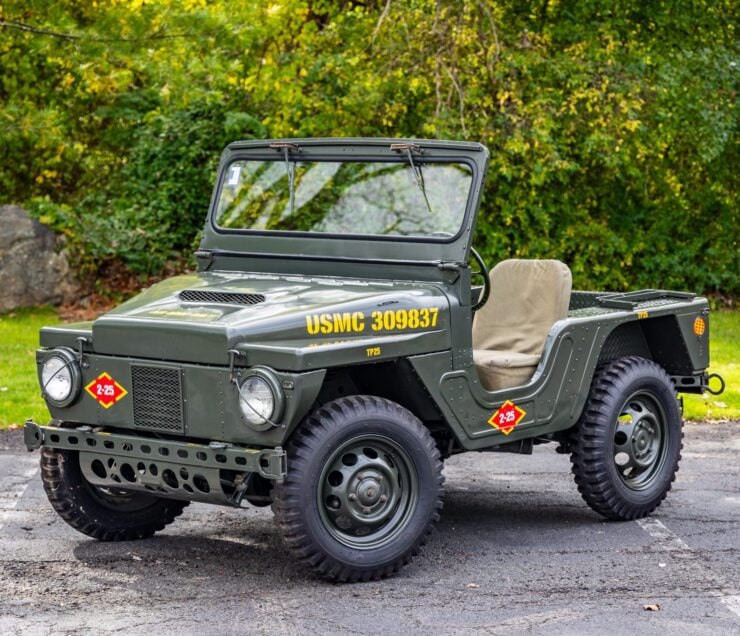
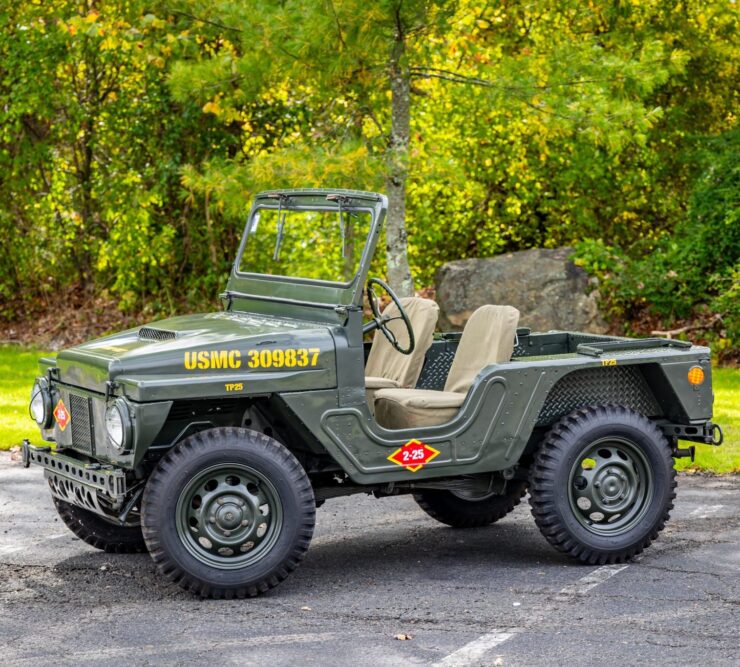
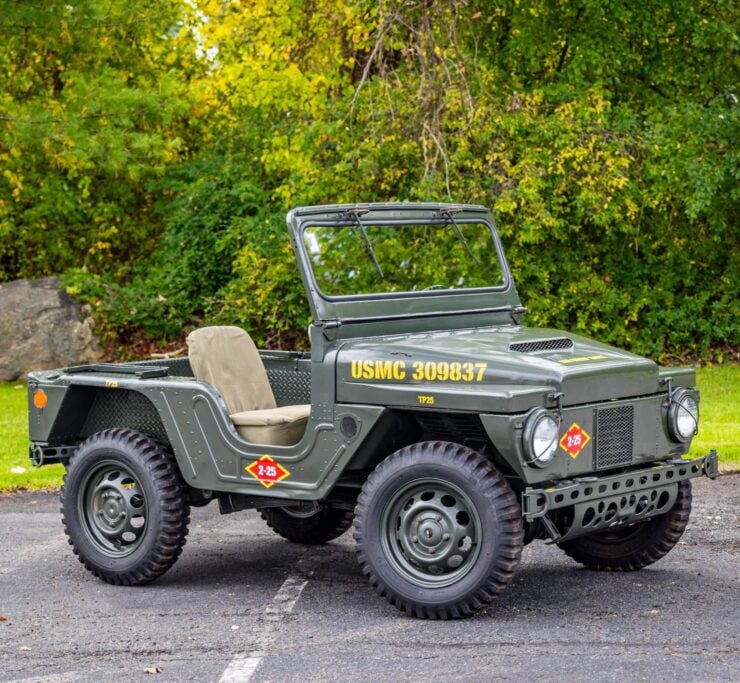
Images courtesy of Bring a Trailer




